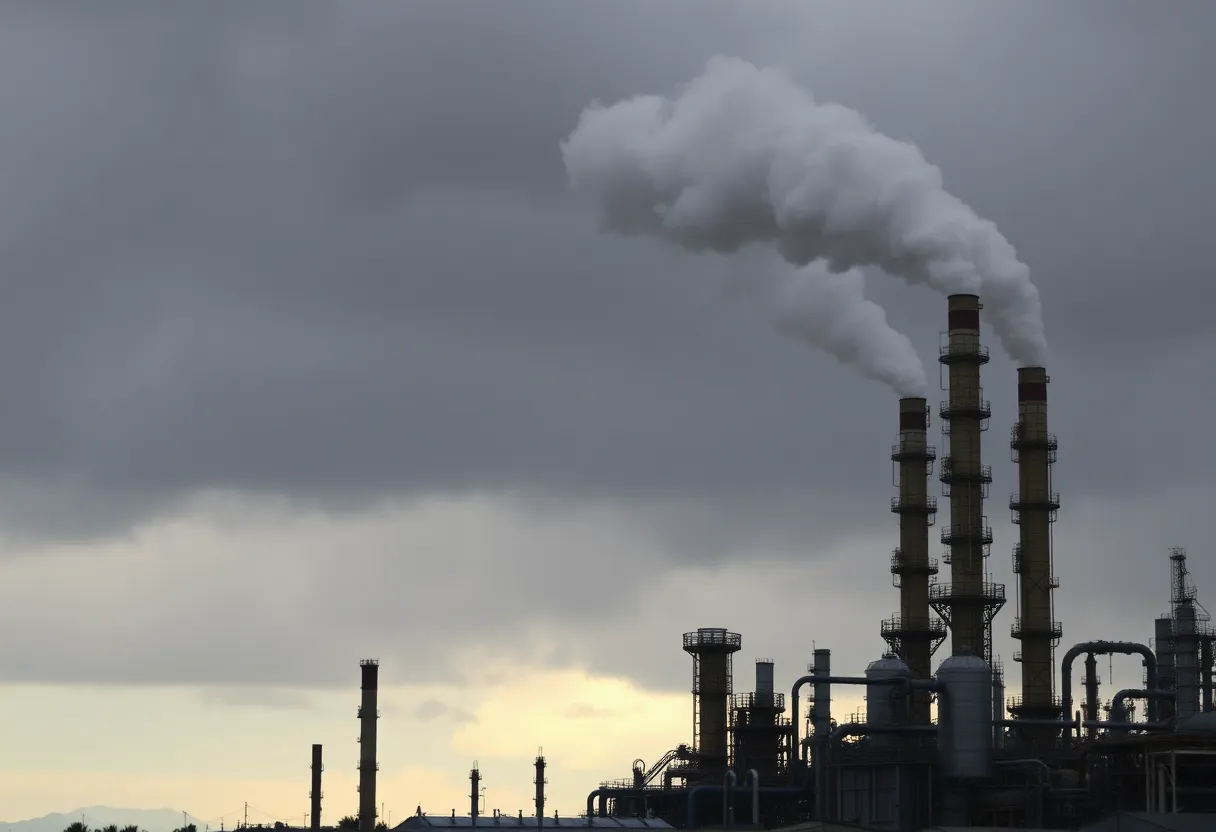News Summary
Valero Energy Corp. has announced a $1.1 billion write-down on its California refineries, raising concerns about the future of fuel production in the state. The decision comes as the company prepares to close its San Francisco-area plant by April 2026, amidst high operating costs and regulatory pressures. With California set to lose a significant portion of its refining capacity, motorists may face continued high gasoline prices. Discussions between Valero and the California Energy Commission aim to find solutions to stabilize fuel supply in the region.
Valero Energy Takes a $1.1 Billion Hit on California Refineries
In a major shakeup in the fuel industry, San Francisco has been buzzing with news that Valero Energy Corp. has decided to write down a whopping $1.1 billion on its California oil refineries. This significant move has raised a lot of eyebrows and sparked conversations about what the future holds for Valero as a fuelmaker in the state that boasts the largest population in the U.S.
What’s Behind the Write-Down?
The company made this announcement in a statement, explaining that they reached the conclusion that the carrying values of their refineries just couldn’t be justified anymore. This comes as the firm prepares to shut down its San Francisco-area plant by April 2026, leaving many to wonder if the same fate awaits their Los Angeles refinery.
Valero executives have hinted that they are currently in the process of evaluating strategic alternatives for the Los Angeles facility. It’s a tricky situation as high operating costs and overwhelming regulatory pressures are making it tough to keep the refineries running profitably.
A Bleak Future for California Refineries?
If you look at the numbers, it paints a concerning picture: by mid-2026, California is set to close down nearly one-third of its refining capacity since the beginning of this decade. This could mean bad news for motorists in California, who are already shelling out the highest gasoline prices in the nation, averaging around $5 per gallon. That’s over 50% higher than the national average!
The cause of this volatility in gasoline pricing can be attributed to several factors. California’s unique fuel standards, combined with frequent supply disruptions stemming from refinery dysfunctions, mean that prices can swing drastically. It’s a challenging combination that leaves consumers feeling the pinch at the pump.
Working Together for Solutions
Valero executives have reached out to the California Energy Commission, seeking ways to cushion the blow of decreased fuel production. Meanwhile, Governor Gavin Newsom has urged the commission to collaborate with oil companies to guarantee a steady supply of fuel and robust in-state refining capabilities. It’s clear that everyone has a stake in this game.
The plant in Benicia, which is set to close at the end of April 2026, currently processes 145,000 barrels of oil daily, representing about 9% of California’s total crude oil refining capacity. As for the Los Angeles refinery, it can handle up to 85,000 barrels per day, but its future remains uncertain.
The Decline of Gasoline Demand
While the demand for gasoline in California is on a gradual decline, it is not expected to disappear entirely anytime soon. Many factors are contributing to this ongoing trend, notably new regulations and rising costs that refiners are facing due to the state’s ambitious climate change policies. The tricky situation only becomes more complicated owing to California’s dependence on imported oil from regions like Latin America and the Middle East.
The Pushback
In response to the unfolding situation, a refining trade group has voiced its frustrations. They’ve criticized the governor’s claims that the previous national administration caused instability, asserting instead that state policies have created the major operational challenges plaguing fuel manufacturers right here in California.
As we look towards the future, it’s clear that significant changes are on the horizon for Valero and California’s fuel industry. With high prices and regulatory burdens, many residents are left wondering how much longer they can expect to pay at the pump. It seems that the road ahead may be bumpy for both consumers and oil companies alike.
Deeper Dive: News & Info About This Topic

Author: STAFF HERE HUNTINGTON BEACH
The Huntington Beach Staff Writer represents the experienced team at HEREHuntingtonBeach.com, your go-to source for actionable local news and information in Huntington Beach, Orange County, and beyond. Specializing in "news you can use," we cover essential topics like product reviews for personal and business needs, local business directories, politics, real estate trends, neighborhood insights, and state news affecting the area—with deep expertise drawn from years of dedicated reporting and strong community input, including local press releases and business updates. We deliver top reporting on high-value events such as the Huntington Beach Surf City USA Marathon, the U.S. Open of Surfing, Fourth of July celebrations at the Huntington Beach Pier, and community festivals at Huntington Beach Central Park. Our coverage extends to key organizations like the Huntington Beach Chamber of Commerce and Visit Huntington Beach, plus leading businesses in retail, hospitality, and outdoor recreation that drive the local economy. As part of the broader HERE network, including HEREAnaheim.com, HERECostaMesa.com, HERESantaAna.com, and HERELosAngeles.com, we provide comprehensive, credible insights into Southern California's dynamic landscape.





